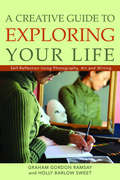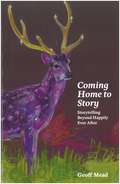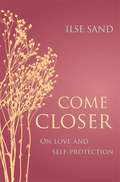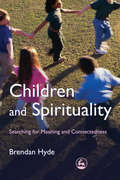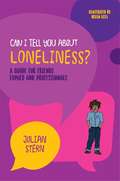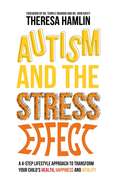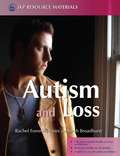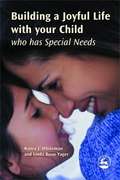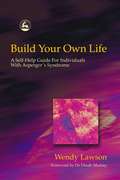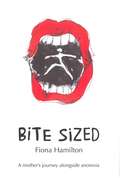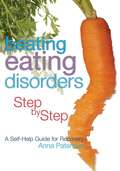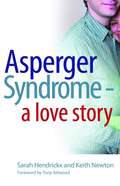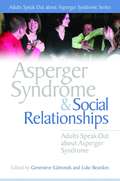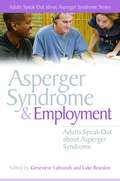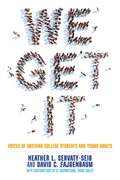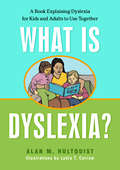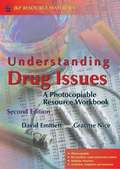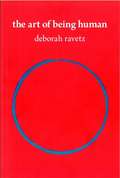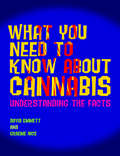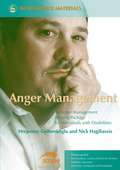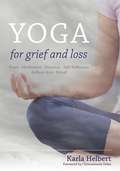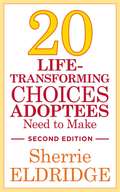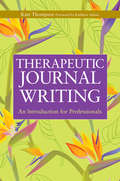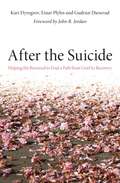- Table View
- List View
A Creative Guide to Exploring Your Life: Self-Reflection Using Photography, Art, and Writing
by Graham Ramsay Holly SweetAn award-winning psychologist and professional photographer join forces in writing this unique creative guide to exploring and understanding your life: who you are, what you value, and what you wish to achieve. A Creative Guide to Exploring Your Life brims with imaginative exercises and examples that use the power of photography, art, and writing as tools for self-discovery. It provides clear and accessible guidance on how to explore different parts of your identity: take a photograph of yourself in a role you don't typically play, draw a visual timeline of your life and consider its key turning points; explore your sense of place in history by writing about a major historical event that has changed your life. Exercises are accompanied by searching questions for self-reflection, and are complemented by examples of each exercise to provoke ideas and inspiration. Featuring additional guidance for teachers, counselors, and other professionals running the exercises in group settings, this book offers a dynamic and enjoyable way for you to explore different aspects of your life.
Coming Home to Story: Storytelling Beyond Happily Ever After (PDF)
by Geoff MeadStories take us into other worlds so that we may experience our own more deeply. Master storyteller Geoff Mead brings the reader inside the experience of telling and listening to a story. He shows how stories and storytelling engage our imaginations, strengthen communities and bring adventure and joy into our lives. The narrative is interspersed with consummate retellings of traditional tales from all over the world.
Come Closer: On love and self-protection (PDF)
by Ilse SandEveryone engages in self-protecting behaviours to some extent, but when these begin to take on the form of bad habits, they can be damaging. People often use self-protection strategies in love and relationships to mitigate potential pain or heartbreak. This book considers the defence mechanisms inadvertently used to avoid closeness with other people, the inner self, and reality and any resulting distress from confrontation with these bodies. This book will teach you how to recognise specific protective behaviours that hinder close relationships and why we engage in them. By understanding the source of these patterns and objectively considering the alternatives, the author will guide you on the path to overcome negative protection strategies and embrace positive relationships. With a foundation in psychology, this book will also be of interest to professional counsellors and therapists.
Children and Spirituality: Searching for Meaning and Connectedness (PDF)
by Brendan HydeBrendan Hyde identifies four characteristics of children's spirituality: the felt sense, integrating awareness, weaving the threads of meaning, and spiritual questing. These characteristics can be observed in children if those who work with them know what to look for and are alert to the time, place and space in which children find themselves. This book provides ways in which schoolteachers and parents can nurture and foster these particular characteristics of children's spirituality. It also considers two factors, material pursuit and trivialising, which may inhibit children's expression of their spirituality. Children and Spirituality will be of great interest to educators, policy makers, parents, and others who work with and seek to nurture the spirituality of children.
Children Also Grieve: Talking about Death and Healing (PDF)
by Linda GoldmanChildren Also Grieve is an imaginative resource, fully illustrated with color photographs, that offers support and reassurance to children coming to terms with the loss of a close friend or relative and to adults who are supporting them through their bereavement. The first part of the book is designed to be read and worked through by children. The story tells of the experiences of Henry, the dog of a family whose grandfather has died. During Henry's progress through the different stages of bereavement, he learns strategies for coping with his grief. At various stages of the story, Goldman provides readers with the opportunity to share their own reactions to loss through words and pictures, using specific prompt questions that encourage the exploration of different facets of grief. The second part includes a list of useful vocabulary to help children express their feelings about bereavement, a bibliography of other useful resources for both children and adults, and a section that will help adults to understand and aid children throughout the grief process. This last section also explains the approach taken in the story, details typical responses to bereavement, and discusses useful ways in which adults can discuss and share grief with children. This book is an invaluable tool for bereaved children and those who care for them.
Can I tell you about Loneliness?: A guide for friends, family and professionals (PDF)
by Helen Lees Julian SternMeet Jan. Jan is sometimes lonely. In this illustrated guide, he describes what loneliness feels like and how it affects him at home and school. He explains what he can do to feel less lonely, and how his teachers, family and friends can help him too. Child loneliness is an area of growing concern. This book is an ideal way to start a conversation about loneliness with anyone aged 7 and above and to help children understand the importance of healthy solitude, as well as socialising. It also includes a useful list of recommended reading, organisations and websites for further information and support.
Autism and the Stress Effect: A 4-step lifestyle approach to transform your child’s health, happiness and vitality (PDF)
by John Ratey Theresa HamlinPresenting a revolutionary lifestyle approach for the whole family, this step-by-step guide will help you to reduce your child's stress and anxiety levels by regulating their environment, eating and nutrition, energy, and encouraging emotional self-regulation. Children with autism often experience very high stress levels in learning and social environments, which can exacerbate problem behaviors and damage their physical and emotional health. This book demonstrates that lowering stress levels through regulating a child's experiences and environments, and giving them the tools to cope when stressful situations are unavoidable, can make a huge and very positive difference to their behavior, physical health, socialisation and happiness. Brimming with exercises, recipes, tips and real-life examples, this warm and supportive guide will help you transform the life of your child with autism and benefit the whole family.
Autism and Loss (PDF)
by Rachel Forrester-Jones Sarah BroadhurstPeople with autism often experience difficulty in understanding and expressing their emotions and react to losses in different ways or in ways that carers do not understand. In order to provide effective support, carers need to have the understanding, the skills and appropriate resources to work through these emotional reactions with them. Autism and Loss is a complete resource that covers a variety of kinds of loss, including bereavement, loss of friends or staff, loss of home or possessions and loss of health. Rooted in the latest research on loss and autism, yet written in an accessible style, the resource includes a wealth of factsheets and practical tools that provide formal and informal carers with authoritative, tried and tested guidance. This is an essential resource for professional and informal carers working with people with autism who are coping with any kind of loss.
Building a Joyful Life with your Child who has Special Needs (PDF)
by Linda Roan-Yager Nancy J. WhitemanAll parents want the best for their child, and for parents of children with special needs, this can mean that their own well-being is neglected. Drawing from their own experiences of parenting children with special needs, interviews and workshops with parents, and research findings, Nancy J. Whiteman and Linda Roan-Yager explore practical ways in which parents can develop a resilient and positive attitude towards caring for their child with special needs. This book considers the challenges of caring for children with physical, developmental and mental health disorders and proposes methods such as learning to see events through your child's own eyes, celebrating their strengths and achievements and recognising how others can help your child. Chapters deal with key topics such as coping with a diagnosis, discussing support needs with a child's teachers and explaining a child's differences to their peers, and the authors stress the importance of parents building support systems for themselves and their children. Real stories from parents and example scenarios illustrate the common difficulties faced by parents of children with special needs, and the authors explain how painful thoughts may be identified and reframed through techniques grounded in cognitive behaviour therapy. Crucially, Building a Joyful Life warns against parents neglecting their own needs, and a range of exercises to be completed by parents will help them to find ways of regaining balance in their lives.
Build Your Own Life: A Self-Help Guide For Individuals With Asperger Syndrome (PDF)
by Wendy LawsonAs someone with Asperger Syndrome, Wendy Lawson knows all about the social difficulties that accompany the condition. In this book, she guides others on the autism spectrum through the confusing map of life, tackling the building bricks of social existence one by one with humour, insight and practical suggestions. Exploring what it is like to be an adult in an alien world, she looks at the concepts of 'self' and 'other' and talks about the people in our lives - how to relate to them, how we can use their support and how we can protect ourselves in the process. Using poetry and illustrations, she goes on to explain the difficult notion of `putting on a face', looks at how to assess personal skills in order to develop them into a suitable career and how to deal with unwelcome changes in life. This book is essential reading for all those on the higher-functioning end of the autism spectrum, helping them to get the best out of a world that is often confusing and aiding those close to them to understand their perspective.
Bite Sized: A mother's journey alongside anorexia (PDF)
by Fiona HamiltonA stark and compelling account of a mother's experience of her daughter's anorexia. With striking illustrations, this is an honest and vulnerable insight into an illness which unravels individuals and families and pushes us to our limits.
Beating Eating Disorders Step by Step: A Self-Help Guide for Recovery (PDF)
by Anna PatersonPeople living with eating disorders find it hard to take the step of choosing recovery, often because the disorder has developed as a way of `coping' with problems or stresses in the their life. This book outlines new and positive ways of dealing with eating disorders for people living with eating disorders and their families. A practical workbook written by someone who has lived with eating disorder, it provides advice and strategies to aid understanding and to help the reader to gain control of their illness. Anna Paterson leads the reader through easy-to-use therapeutic exercises, such as describing the pros and cons of an illness, writing a farewell letter to it, and using role-reversal scenarios to get a new perspective on their attitude to eating. She emphasizes the importance of taking things at your own pace and in the final section of the book provides a set of diet plans specifically designed for anorexics, bulimics and compulsive overeaters. This book will be valued by people living with eating disorders and their families, and also the psychologists and psychotherapists, counsellors, health professionals and social workers who work with them.
Asperger Syndrome - A Love Story (PDF)
by Keith Newton Sarah Hendrickx Tony AttwoodOpen, honest and upbeat, this book gives personal insight into both the ups and downs of an Asperger relationship. Seeking to challenge the bad press that people with Asperger Syndrome (AS) get as partners, Sarah and Keith tell their story of how they are making it work - and also how they got it wrong - with disarming frankness and humour. When Sarah and Keith met in 2003 neither knew much about Asperger Syndrome. Sarah thought Keith was `weird' and couldn't work out why; and Keith thought Sarah was obsessed with diagnosing him with something-or-other. Difficulties ensued that brought the relationship to an end. Slowly, however, they each built up their knowledge of AS and in the meantime developed a mutual understanding, mutual acceptance and a desire to be together again. This personal account is supplemented with professional knowledge and anecdotes gained from Sarah's work with adults with AS - a career which started as a result of her experiences with Keith. She swears that she didn't take her work home with her! It is inspiring reading for couples in Asperger relationships as well as for counselling professionals.
Asperger Syndrome and Social Relationships: Adults Speak Out about Asperger Syndrome (PDF)
by Alexandra Brown Anne Henderson Chris Mitchell Dean Worton Genevieve Edmonds Giles Harvey Hazel Dawn Pottage Kamlesh Pandya Liane Holliday Willey Luke Beardon Neil Shepherd Pj Hughes Stephen Jarvis Stephen William Cornwell Vicky Bliss Wendy Lawson`This book is essential reading to understand the social abilities of adults with Asperger's syndrome. The contributors each have different personalities and experiences, but together they provide a range of strategies to encourage people with Asperger's syndrome to achieve the social relationships they desire.' - Professor Tony Attwood Social interaction among neurotypical people is complex and in many ways illogical. To the person with Asperger Syndrome (AS) it is also woefully unintuitive. In this book, adults with AS discuss social relationships, offer advice and support for others with AS and provide necessary insights into AS perspectives for those working and interacting with them. The contributors evaluate a range of social contexts and relationship aspects, including: * online relationships - a worldwide social network based on non-verbal communication, * the unwritten rules of neurotypical socialising, * the need for mutual understanding between those with AS and neurotypicals, * the effects of struggling socially on one's self-esteem and frame of mind, and * the opportunities provided by social skills workshops or interest groups. This is essential reading for adults with AS, their family and friends, as well as service providers and other professionals providing support for people with AS in adult life.
Asperger Syndrome and Employment: Adults Speak Out about Asperger Syndrome (PDF)
by Alexandra Brown Anne Henderson Chris Mitchell Dean Worton Emma Beard Genevieve Edmonds Giles Harvey John Biddulph Luke Beardon Mark Haggarty Neil Shepherd Pj Hughes Philip Bricher Stephen Jarvis Stephen William Cornwell Stuart Vallentine Vicky BlissEmployment is an important part of a healthy, balanced and fulfilling life but less than 20 per cent of people with Asperger Syndrome (AS) are in work at any one time. The adults with AS in this book explore the issues surrounding employment, providing advice and insights for others with AS, as well as their employers and colleagues. Drawing on personal experience and lessons learned, Asperger Syndrome and Employment looks at: * the transition from education to employment, * the importance of matching skills to career choices, * practical coping strategies for employees with AS in the workplace, * advice for employers, including the need to make `reasonable adjustments' to avoid discrimination, * ways in which employment services ought to work for people with AS. This is essential reading for adults with AS, their family and friends, employment services and career advisers, and companies needing to know how, in practical terms, to accommodate employees with AS.
We Get It: Voices of Grieving College Students and Young Adults (PDF)
by David C. Fajgenbaum Heather L. Servaty-SeibSilver Medal Winner in the Grief/Grieving category of the 2015 Foreword Reviews' INDIEFAB Book of the Year Awards A unique collection of 33 narratives by bereaved students and young adults, this books aims to help young adults who are grieving and provide guidance for those who seek to support them. Grieving the death of a loved one is difficult at any age, but it can be particularly difficult during college and young adulthood. From developing a sense of identity to living away from family and adjusting to life on and off campus, college students and young adults face a unique set of issues. These issues often make it difficult for young adults to talk about their loss, leading to a sense of isolation, different-ness and a pressure to pretend that everything is OK. The narratives included in this book are honest, engaging and heartfelt, and they help other students and young people know that they are not alone and that there are others who 'get' what they are going through. The narratives are usefully divided by themes, such as isolation, forced maturity and life transition challenges, and include commentary by the authors on grief responses and coping strategies. Each section also ends with helpful questions for reflection. Inspired by the experiences of Dr. Fajgenbaum losing his mother during college and Dr. Servaty-Seib dedicating her career to college student bereavement, this book will be a lifeline for students and young adults who have lost a loved one. It will also be of immeasurable value to counselors, college administrators, grief professionals and parents.
What is Dyslexia?: A Book Explaining Dyslexia for Kids and Adults to Use Together (PDF)
by Alan M. Hultquist Lydia CorrowPraise for What is Dyslexia?: '…informative, based on the latest research and compassionate - three qualities that make this a must read for parents and children struggling with dyslexia.' - Paul M. Quinlan, Ph.D. from The Curtis Blake Center Praise for An Introduction to Dyslexia for Parents and Professionals by the same author: 'Hultquist writes in such measured, clear and uncluttered prose that no one can take the journey from diagnosis to remediation without feeling that one is in the hands of someone who really understands the issues surrounding a dyslexia diagnosis, not only for the one diagnosed but also for the whole family and the professionals working with them.' - Dyslexia Contact, Vol. 26, Feb 2007 What is Dyslexia? is designed to help adults explain dyslexia to children. The author provides information about all the most common types of dyslexia: trouble with sounds, trouble remembering how letters and words look, trouble finding words, and mixed dyslexia. He deals with the basic facts and adopts a style which is accessible to children without talking down to them. The book includes clear examples which children will be able to understand, as well as activities for parents to do with their children. The author emphasises that everyone has strengths and weaknesses and that having dyslexia is okay. This book will be valuable for parents of children with dyslexia, as well as other adults working with children with dyslexia.
Understanding Drug Issues: A Photocopiable Resource Workbook Second Edition (PDF)
by David Emmett Graeme NiceThis fully updated edition of a successful resource succeeds in engaging and involving young people where many other methods of drugs education - including attempts to shock, inform, or promote decision-making - have failed to make a lasting impact. This is largely because they don't utilize young people's own views, intelligence and insight. The range of 30 original exercises in this resource is designed to expand and challenge participants' understanding of the issues surrounding illegal drug use, with activities that will enable them to make active and informed personal judgements about drugs. Understanding Drug Issues features informative and balanced material on all the key issues involved, including: * the facts and fiction about drugs * peer pressure * the social consequences of drug use * buying drugs * the dangers involved in using * the pros and cons of drug use * legal implications * the effects of drugs on health. The activities are ideal for use in groups and feature all the latest developments surrounding the use and abuse of drugs, as well as useful contact details for those wanting further help. The material is photocopiable and designed to be used flexibly - for example as worksheets or overhead projections. Understanding Drug Issues is an essential resource that will be valued by teachers, youth workers, probation officers, those working with offenders, and any professionals working with young people. This workbook can be used on its own, or ideally in combination with its companion volume Understanding Drugs: A Handbook for Parents, Teachers and Other Professionals, a complete reference on drugs issues (second edition forthcoming, September 2005).
The Art of Being Human: Life, Family, and Creativity (PDF)
by Deborah RavetzDeborah Ravetz explores the territory of our inner landscape by showing us that it is only through embracing and working with all aspects of our selves, including our vulnerability and pain, that we give meaning and experience joy. Through telling her own story and those of others who have faced their demons and worked through their struggles, she helps us to embark on the journey that all of us need to make in order to become fully ourselves. Packed with applicable strategies for spiritual development and practice, this book serves to empower and cultivate holistic wellbeing.
What You Need to Know About Cannabis: Understanding the Facts (PDF)
by David Emmett Graeme NiceDoes cannabis really trigger schizophrenia? Is it true that cannabis is a non-addictive drug? What's the difference between hash and skunk? According to the UN's estimate, 160 million people around the world use cannabis; that's roughly 2.5 per cent of the world population. Despite these figures, most people have a profound lack of knowledge about cannabis, made all the more dangerous by the changing nature of the drug itself, with much higher levels of potency being seen today than ever before. What You Need to Know About Cannabis offers accessible, accurate and objective information about the drug, allowing the reader draw their own conclusion. The book demystifies the latest research about the effects of cannabis, particularly in relation to mental health issues. Suitable for use as a resource for teachers, professionals, parents and young people who want to know the facts about cannabis, this book tells you what you need to know about this controversial drug.
Anger Management: An Anger Management Training Package for Individuals with Disabilities (PDF)
by Nick HagiliassisMany people with intellectual disabilities have difficulty managing feelings of anger. Anger Management is a complete training package for helping people with intellectual or physical disabilities deal with anger in constructive, effective ways. The training programme consists of 12 fully-scripted sessions dealing with topics such as recognising feelings of anger, learning to relax and think calmly, and being assertive and handling problems competently. Each session follows a standard format, including introductions, reviews of previous sessions, and explanations. Photocopiable handouts, facilitator's script and evaluation sheets are provided for each session. Designed specifically for people with intellectual disabilities, but suitable for people with physical disabilities too, this training package provides relevant and authoritative information and exercises. It is a tried-and-tested resource which will provide effective strategies for anger management trainers, psychologists and counsellors.
Yoga for Grief and Loss: Poses, Meditation, Devotion, Self-Reflection, Selfless Acts, Ritual (PDF)
by Chinnamasta Stiles Karla HelbertJust as grief is an experience that affects us physically, mentally, emotionally, cognitively, and spiritually, yoga sustains and strengthens us in all of those same areas. This book demonstrates how the principles and practices of yoga can help relieve symptoms of grief allowing those who have experienced loss to move toward wholeness, peace, and feelings of connection with loved ones who have died. Exploring the six branches of yoga, the book shows how each branch can support us through grief in different ways whether it be the self-reflection of Jnana Yoga, the spiritual devotion of Bhakti Yoga, the meditation of Raja Yoga, or the physical postures of Hatha Yoga. We are shown how to begin and sustain a personal practice, both on and off the yoga mat, which helps us to cope with and move through grief on multiple levels. Expressive and experiential exercises are included to help explore each of the branches of yoga and find ways to put the tenets of each branch into real life practice.
20 Life-Transforming Choices Adoptees Need to Make, Second Edition (PDF)
by Sherrie EldridgeAs an adoptee, do you have mixed feelings about your adoption? If you do, you are not alone - adoptees often experience complex feelings of grief, anger, and questions about their identity. Sherrie Eldridge is an adoptee and adoption expert, and in this book she draws on her personal experiences and feelings relating to adoption as well as interviews with over 70 adoptees. Sherrie reveals how you can discover your own unique life purpose and worth, and sets out 20 life-transforming choices which you have the power to make. The choices will help you discover answers about issues such as: Why do I feel guilty when I think about my birth parents? Why can't I talk about the painful aspects of adoption? Where can I gain an unshakable sense of self-esteem? Sherrie also addresses the problem of depression among adoptees and common dilemmas such as if, when and how to contact a birth mother or father. This fully updated second edition includes new material on finding support online, contacting family through social media, and features three new chapters, including Sherrie's story of reuniting with her birth brother, Jon, in adulthood.
Therapeutic Journal Writing: An Introduction for Professionals (PDF)
by Kate Thompson Kathleen AdamsWriting a journal is not just about keeping a record of daily events - journal writing provides a unique therapeutic opportunity for facilitating healing and growth. The author of this book guides the reader through developing journal writing to use as a therapeutic tool. Keeping a journal can help the writer to develop a better understanding of themselves, their relationships and the world around them, as well as improve skills of problem-solving, decision-making and planning. As such, journal writing can be a powerful complement to verbal therapy, offering an effective and affordable way of extending support to troubled clients. The book includes advice on working with individuals, facilitating a therapeutic writing group, proposed clinical applications, practical techniques, useful journal prompts, exercises and case vignettes. This clear guide to the basics of journaling and its development as a therapeutic medium will be a valuable handbook for therapists, health and social care practitioners, teachers, life coaches, writing facilitators and any professional seeking personal development in themselves or their clients.
After the Suicide: Helping the Bereaved to Find a Path from Grief to Recovery (PDF)
by Einar Plyhn Gudrun Dieserud Kari Dyregrov*Highly Commended in the Health and Social Care category at the 2012 British Medical Association Book Awards* Those left behind in the wake of suicide are often plagued by unanswered questions and feelings of guilt. Helping them to understand why the suicide happened, how suicide survivors commonly react and cope, and where they can find support can help them move forwards on their path from grief to recovery. Drawing on the testimonies of suicide survivors and research into suicide bereavement, this book provides those working with the bereaved with the knowledge and guidance they need. It covers common grief and crisis reactions, including those specific to children and young people, how suicide bereavement differs from other forms of bereavement, and how others have coped and been supported. It also addresses how the bereaved can move on, including advice on support networks including friends, family, professionals and other bereaved people. This book will be invaluable to all those supporting those who have been bereaved by suicide, including counsellors, bereavement support workers, social workers, and psychologists.
